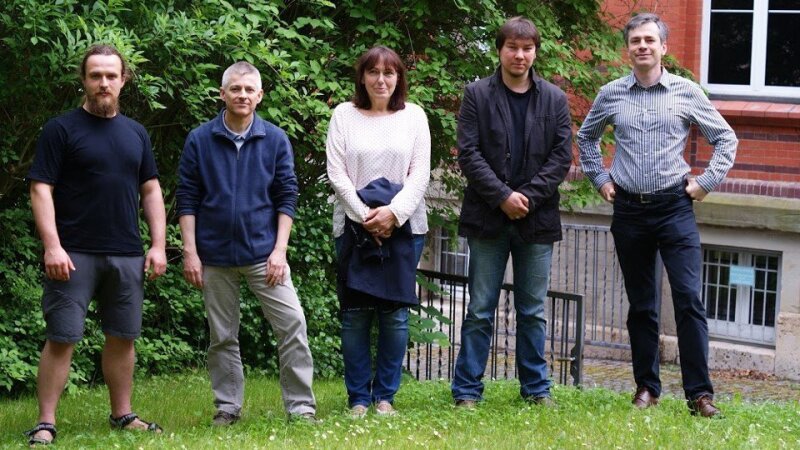Laboratory Astrophysics and Cluster Physics Group
Photo of the group members.
Image: Cornelia JägerThe research of the Laboratory Astrophysics and Cluster Physics Group is devoted to fundamental astrophysical questions that can be answered by laboratory experiments, with particular emphasis on condensation, irradiation-induced processing, and spectroscopy of cosmic dust grains and molecules. The Laboratory Astrophysics and Cluster Physics Group at the Institute of Solid State Physics results from a cooperation between the Max Planck Institute for Astronomy in Heidelberg and the Friedrich Schiller University. Inaugurated in February 2003, it is now led by PD Dr. habil. Cornelia Jäger.
The laboratory is equipped with advanced setups including molecular beam machines and flow reactors as well as dedicated laser systems to contribute to the understanding of fundamental astrophysical questions. We are able to simulate circumstellar and interstellar processes such as gas phase condensation of grains and molecules at very high (> 1000 K) and very low temperatures (~6 K). Sophisticated analytical tools comprising in-situ optical spectroscopy in the UV and IR range, mass spectrometry, chromatography, and electron microscopy help us to characterize the composition and structure of the produced laboratory particulate and molecular analogues.
A new ultrahigh vacuum setup dedicated to the study of photon-induced astrochemical reactions in ice layers shrouding carbonaceous and siliceous dust grains at conditions prevailing in the dense interstellar medium and in protoplanetary environments has been developed. Dust grains cooled down to about 10 K can be covered by ice mantles mainly composed of H2O, CO, CO2, NH3, CH3OH, and CH4. Under energetic irradiation, complex organic and small prebiotic molecules such as aldehydes, carboxylic acids, esters, amino acids, and small sugar molecules are formed at interstellar or planetary conditions. The new instrument helps us to understand astrochemical processes, in particular, the catalytic effect of grain surfaces.
Another unique environment to study interstellar surface reactions is provided by superfluid helium droplets, which can be produced in a supersonic expansion of helium through an 11 K cold nozzle. The droplets can be doped with atoms and molecules that react between each other and form new species. The energy released during the reaction causes the evaporation of He atoms and a measurable reduction of the droplets and can be measured.
